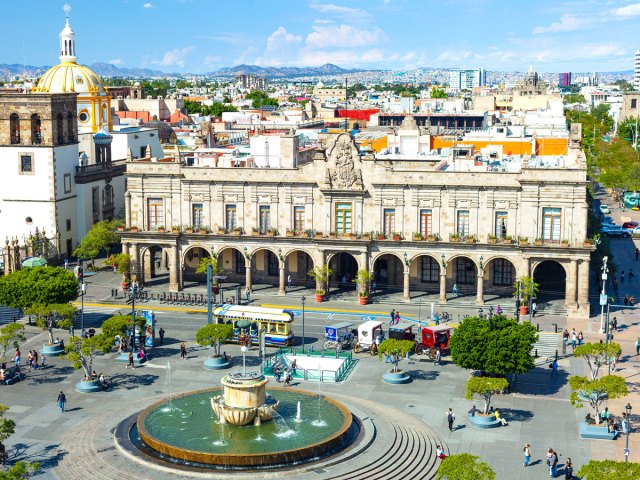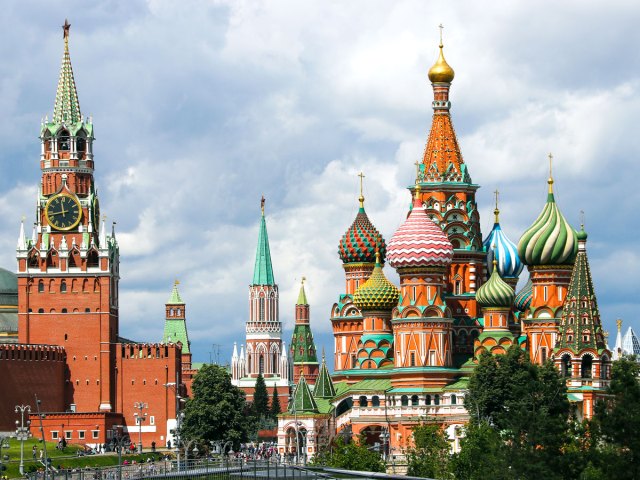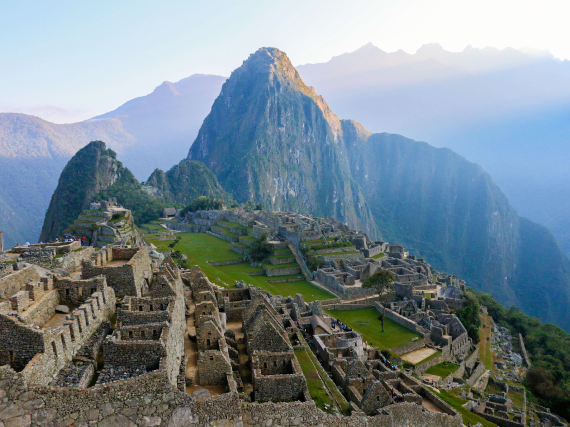Before the 19th century, towns and cities around the world set their own times, usually following solar time. As travel and communication technology developed, however, this increasingly led to confusion and chaos. So, in the 1840s, Greenwich Mean Time (GMT) — later changed to Universal Coordinated Time (UTC) — was established at the prime meridian, located at 0 degrees longitude. Today, time zones around the globe are measured from this starting point. They shape everything from business schedules to flights and international broadcasts. Most follow orderly lines of longitude, but politics, colonization, and geography often twist the map. Here are nine countries with the most time zones.
Brazil

Number of time zones: 4
Brazil stretches across almost the entire width of South America as the continent’s largest country. There are four time zones in Brazil, ranging from UTC-2 (two hours behind Greenwich, England) to UTC-5. An estimated 90% of the country’s population live within Brasília Time (BRT), set at UTC-5. It incorporates 21 of the 27 Brazilian states, including the cities of Rio de Janeiro and Sao Paulo. In 2019, officials in Brazil decided to remove daylight saving time in order to end clock confusion; however, the decision is being reconsidered due to energy challenges brought about by climate change.
Mexico

Number of time zones: 4
Prior to 1922, towns and cities in Mexico used solar time. This meant that Mexico City was about 6 hours and 36 minutes behind Greenwich Mean Time. Today, the country’s four zones loosely mirror those in the contiguous United States. The Baja California state on the Pacific Coast is on Pacific Standard Time (UTC-8), while Quintana Roo is on Eastern Standard Time (UTC-5) and Mexico City observes Central Standard Time (UTC-6). Interestingly, while Mexico abolished daylight saving time in 2022, some northern border municipalities still adjust their clocks twice a year to stay in sync with the United States.
Denmark

Number of time zones: 5
When including its mainland and territories, Denmark spans five time zones. This reflects the kingdom’s vast geographic spread between Europe, the North Atlantic Ocean, and the Arctic Circle. Mainland Denmark is on Central European Time (UTC+1) and observes daylight saving time. About 700 miles to the northwest, the Faroe Islands follow Western European Time, which has no offset from Coordinated Universal Time (UTC). Another 1,160 miles northwest, Greenland — the world’s largest island — is split into three time zones, ranging from UTC+0 to UTC-3. This makes the island’s western region closer in time to eastern Canada than to mainland Denmark.
Canada

Number of time zones: 6
Canada, the world’s second-largest country, observes six time zones. There’s a 4.5-hour swing from Newfoundland Standard Time (UTC-3.5) in the east to Pacific Standard Time (UTC-8) in the west. The island of Newfoundland is unique in that it’s the only place in North America to have a 30-minute deviation from UTC, rather than the standard hour offset. This was chosen because the 30-minute offset was closer to solar time in the capital, St. John’s, where a significant number of Newfoundlanders live.
Australia

Number of time zones: 8
The world’s only country to cover an entire continent, Australia observes some of the most interesting time zones. Australia Western Standard Time (UTC+8) covers the state of Western Australia. Going against the grain is Eucla and a handful of other small towns, which observe Australian Central Western Standard Time at a 45-minute offset (UTC+8:45). Highway signs tell visitors to advance and turn their clocks back when passing through. Encompassing the eastern coast states and Tasmania is Australian Eastern Standard Time (UTC+10).
Australia also has individual time zones on off-shore islands and dependencies. They include the Coco Islands (UTC+6:30), Christmas Island (UTC+7), Lord Howe Island (UTC+10:30), and the Norfolk Islands (UTC+11).
United Kingdom

Number of time zones: 9
The United Kingdom has long played a major role in global timekeeping. From 1884 to 1972, the time measured at London’s Royal Observatory Greenwich, Greenwich Mean Time (GMT), was the world’s standard, before it was renamed Universal Coordinated Time (UTC). While the United Kingdom continues to observe UTC, its many overseas territories differ between UTC-8 and UTC+6. The easternmost time zone is observed in the British Indian Ocean Territory, which includes the Chagos Archipelago. Almost 10,000 miles away in the southern Pacific Ocean are the isolated Pitcairn Islands, which observe the U.K.’s westernmost time zone.
United States

Number of time zones: 9
Similar to time zones in the U.K., time zones in the United States are spread across the mainland, noncontiguous states, and overseas territories. Currently, there are nine official zones. Four of them — Eastern (UTC-5), Central (UTC-6), Mountain (UTC-7), and Pacific (UTC-8) — are in the contiguous U.S. Others are observed in the states of Alaska and Hawaii, plus territories such as American Samoa and Puerto Rico. The distance between the country’s westernmost and easternmost territories is approximately 9,500 miles, from Guam (UTC+10) to the U.S. Virgin Islands (UTC-4).
The U.S. also has two unofficial time zones, so some consider there to be 11 time zones. These two time zones are used for the uninhabited Howland Island and Baker Island, one of the last places on Earth to experience a calendar day.
Russia

Number of time zones: 11
Measuring roughly 5,600 miles east to west, Russia is the largest country in the world, so it’s no surprise that it has a lot of time zones. In fact, Russia holds the record for the highest number of zones (10) in a contiguous country. (Interestingly, neighboring China, the world’s fourth-largest country, observes only one time zone — the largest sovereign nation to do so.)
In Russia, there’s a nine-hour difference between Kamchatka Time (UTC+12) in the east and Moscow Standard Time (UTC+3) in the west. The country’s 11th zone is observed in Kaliningrad, a province nestled between the Baltic Sea, Poland, and Lithuania. It’s the only Russian region to observe Eastern European Time (UTC+2).
France

Number of time zones: 12
With an impressive 12 standard time zones, France has the most time zones of any country. The entirety of the French mainland, however, observes Central European Time (UTC+1). This is the same time zone followed in more than 30 European countries, along with the North African nations of Algeria and Tunisia.
France also has 11 dependencies and overseas territories, each with their own time zones. Among them are the Caribbean islands of Guadeloupe, Martinique, St. Barthélemy, and St. Martin, which all follow Atlantic Standard Time (UTC-4). Meanwhile, the 118-island territory of French Polynesia is split into three separate zones.
More from our network
Daily Passport is part of Inbox Studio, which publishes content that uplifts, informs, and inspires.
















